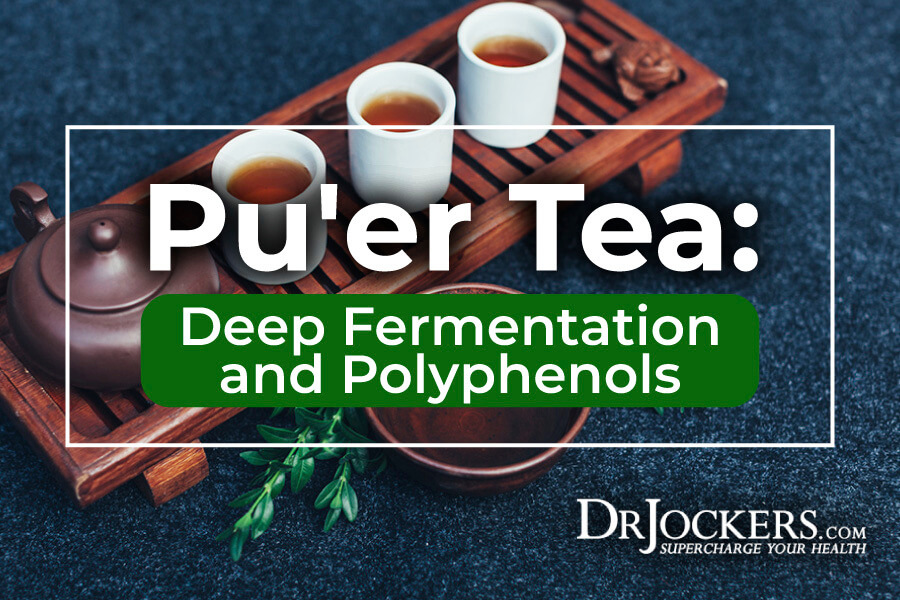
Pu’er Tea: Deep Fermentation and Polyphenols
Pu’er tea (pronounced poo-erh) is a Chinese tea with a unique flavor and tons of polyphenols. But it unfortunately hasn’t gained much popularity in the U.S. and remains a mystery to many consumers.
Pu’er is a fermented tea. This means after the tea leaves are picked, dried, and rolled, they undergo microbial fermentation with specific molds, yeast, and bacteria. We know these as probiotics.
This fermentation process darkens the color of the leaves, enhances their flavor, and creates a unique polyphenol profile not found in other varieties of tea. Pu’er is the only tea that goes through this extra fermentation step.
How It’s Made
There are two ways tea makers process pu’er leaves: the traditional method and the commercial method. Each method begins the same way – with the leaves being set out to dry just after harvest.
The leaves are continually rotated to ensure each is completely moisture-free. This step also destroys any harmful plant toxins found in the leaves. This finished product is known as maocha.
Here’s where the traditional and commercial methods diverge. By the traditional method, maocha is left to ferment with naturally-occurring bacteria, yeast, and mold in storage. This is known as “raw” pu’er.
By the commercial method, tea factories put the maocha through a step known as “pile fermentation.” Here, a culture similar to the natural bacteria on the leaves is added to speed up fermentation. The tea is then aged 40 to 60 days and is considered “fully ripened (1).
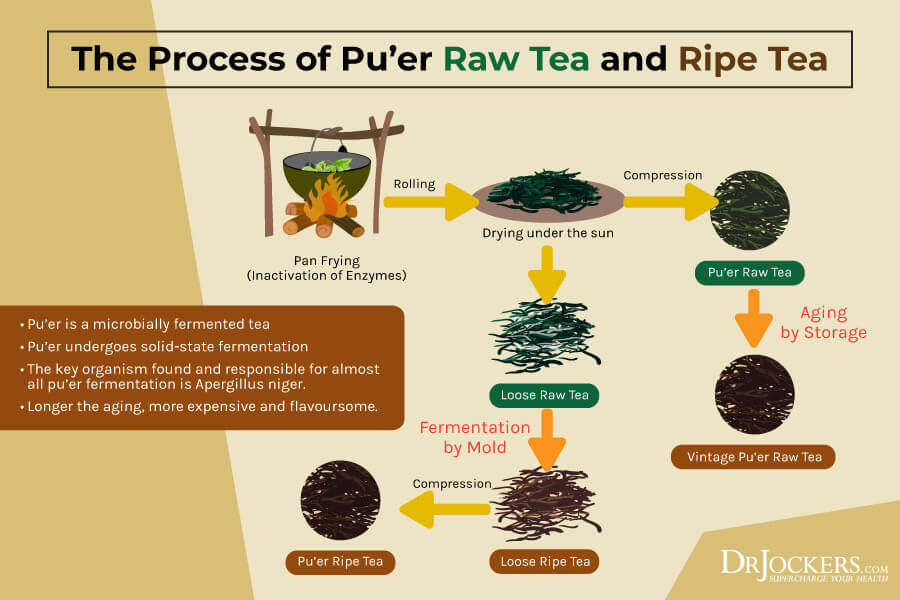
Raw vs. Ripe Pu’er Tea
Flavor and polyphenol content differ between the two types of pu’er. Raw pu’er is high in a certain type of polyphenol known as catechins. During the rapid fermentation process used to ripen pu’er, added bacteria and fungi metabolize the catechins and transform them into another type of polyphenol called theaflavins (2).
While catechins are known for supporting brain health, immunity and skin health, theaflavins are linked to support for digestion and heart health, thanks to the higher microbial content (3, 4).
Raw pu’er teas are robust, complex, structured teas that are rich in tannins that mellow as the tea ages. Ripened pu’er is smoother and less less tannic from the start and has woody, earthy notes (5).
Both will continue to change flavors, get smoother, and finish with a sweeter taste as they age. You’ll never have quite the same taste each time, which is why many tea collectors keep pu’er teas of different ages on hand.

Brewing Pu’er Tea
Pu’er tea is traditionally steeped in a ceramic Yixing teapot to allow for longer steeping under hotter temperatures.
Break off a small chunk of pu’er from the “cake” and add it to your teapot. Run hot water over the tea leaves to “awaken” them and release their aroma. Then discard this water.
Next, add fresh, hot water to your cup of wet tea leaves and steep for a few minutes. Sieve out your leaves and put them aside so you can re-steep them later.
Pu’er tea can be steeped almost a dozen times. The intensity of flavors and caffeine content will diminish with each brew, but you can still stretch the leaves for several tasty cups.
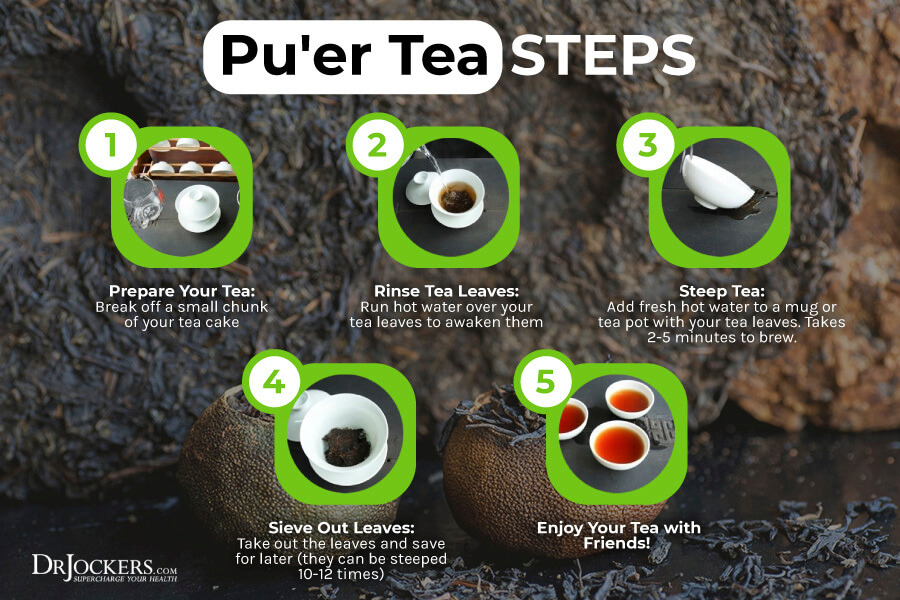
Why Quality Matters
Researchers found 629 bacterial and 390 fungal species on pu’er tea leaves that they studied (1). A mix of beneficial bacteria supports human gut health, but some strains can cause illness. Uncontrolled and unmonitored bacterial growth could make your batch of pu’er go rancid.
This is why it’s important to choose a reputable tea source. Research your tea maker and know how their product is processed and monitored for quality. Organic and pesticide-free tea leaves may be a safer bet, but are often more expensive.
Health Benefits of Pu’er Tea
Traditional Chinese herbalists have long recommended ripe pu’er tea to “warm the stomach” and support digestion. Like any fermented food, it helps to maintain the variety and balance of beneficial bacteria in the intestinal tract.
By supporting digestion, a healthy microbiome also supports healthy weight management (6). Researchers believe that pu’er tea helps to inhibit the enzymes that encourage the body to store fat. In simpler terms, a healthy gut may help our bodies discard excess energy instead of storing it.
The catechins in raw pu’er tea may also support healthy skin. In one in-vitro study– which means cells were examined under a microscope instead of using a human participant — researchers discovered that extracts of pu’er could help boost the health of our largest organ, our skin (1).
The extract appeared to protect elastin, a vital protein that keeps our skin smooth and wrinkle-free and is usually damaged with age. It’s also a component of our connective and organ tissues as well.
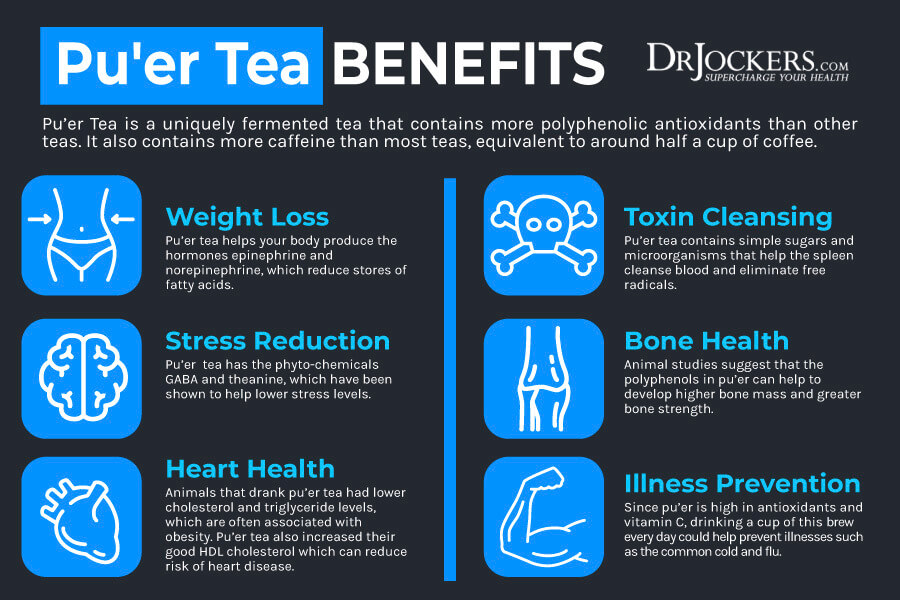
Final Thoughts on Pu’er Tea
With its characteristic flavor profile and unique fermentation process, pu’er tea will be a fantastic addition to any tea drinker’s collection. You may find it becomes a new favorite in your rotation of green, black, white, and oolong tea options. But no matter which way you enjoy it, the perfect cup starts with the best quality tea leaves.
Want more catechins in your life?
Feeling the need for theaflavins?
Want to have all your bases covered for radiant health?
My favorite fermented pu’ers are from Pique Tea. As always, their teas deliver the concentration, quality, purity and convenience I desire. Their pu’ers are wild-harvested from 250-year old tea trees, the roots of these ancient varietals grow deeper than any others.
Stretching deep into untouched soil teeming with centuries of natural biodiversity, these roots draw rare minerals, microbial diversity and precious nutrients to its dense leaves. These are rare teas with limited quantity and they will sell out so grab them before they are gone!
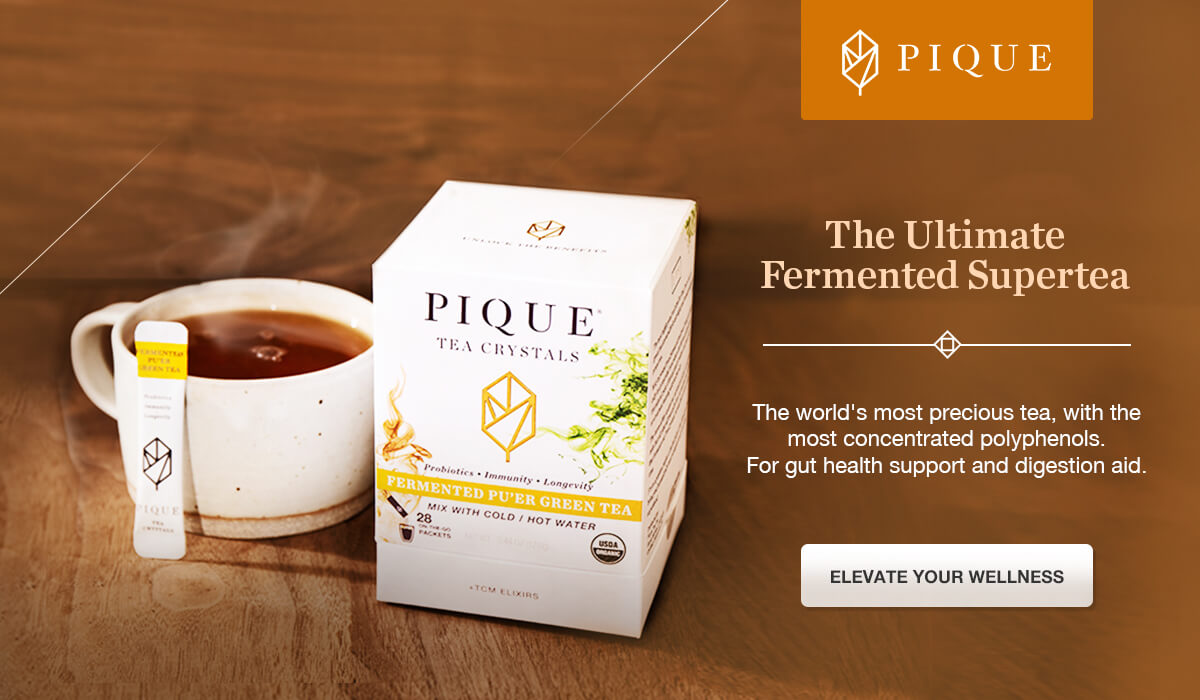



thanks for the info and i researched it is available locally!
Great to hear that!
Thanks for the useful article! Does pu erh tea contain any traces of alcohol, due to the fermentation process? Particularly Shu pu erh.
No we haven’t found any traces of alcohol.